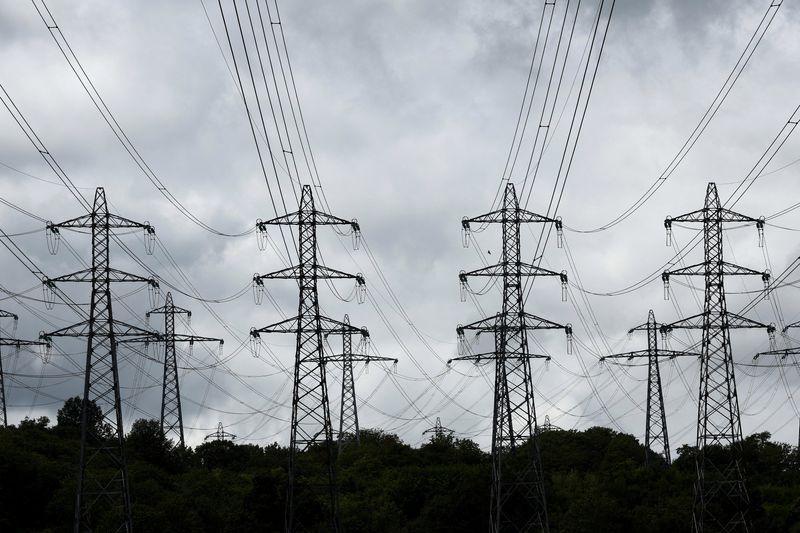Electricity Transmission Infrastructure Market Revolution: Powering the Future of Energy

The electricity transmission infrastructure market is undergoing a significant revolution, driven by technological advancements, the urgent need for sustainable energy solutions, and changing consumer demands. As the world shifts towards renewable energy sources and smart grid technologies, this transformation is crucial for ensuring a reliable and efficient electricity supply.
1. The Shift to Renewable Energy
1.1. Integration of Clean Energy Sources
As countries strive to meet climate goals and reduce carbon emissions, the integration of renewable energy sources, such as solar, wind, and hydroelectric power, is paramount. The decentralized nature of these energy sources requires an adaptive transmission infrastructure that can effectively manage fluctuations in generation and demand.
1.2. Decentralization of Power Generation
The rise of distributed energy resources (DERs) means that power generation is increasingly occurring at the local level. This shift necessitates the development of flexible transmission networks capable of accommodating bidirectional electricity flows. Such networks enhance grid resilience and allow for greater participation from consumers and local communities.
2. Smart Grid Technologies
2.1. Enhanced Grid Management
Smart grid technologies are revolutionizing how electricity is transmitted and managed. By incorporating advanced sensors, automated controls, and data analytics, smart grids enable real-time monitoring and management of electricity flows. This results in improved efficiency, reduced losses, and a more reliable energy supply.
2.2. Demand Response and Consumer Engagement
Smart grids facilitate demand response programs, empowering consumers to manage their energy usage more effectively. By incentivizing shifts in consumption patterns during peak demand periods, utilities can optimize grid performance and reduce the need for costly infrastructure upgrades.
3. Technological Innovations
3.1. High-Voltage Direct Current (HVDC)
High-voltage direct Current (HVDC) technology is at the forefront of the transmission revolution. HVDC systems allow for efficient long-distance transmission of electricity with lower losses compared to traditional alternating current (AC) systems. This technology is particularly valuable for connecting remote renewable energy projects to urban demand centers.
3.2. Energy Storage Solutions
The integration of energy storage systems, such as batteries and pumped hydro, is crucial for managing the variability of renewable energy generation. These solutions allow excess energy to be stored during periods of low demand and dispatched during peak usage, enhancing grid stability and reliability.
4. Regulatory Support and Policy Frameworks
4.1. Incentives for Renewable Integration
Governments worldwide are implementing regulatory frameworks that support the transition to cleaner energy. Policies that incentivize the development of renewable energy projects and associated transmission infrastructure play a pivotal role in accelerating this revolution.
4.2. Public-Private Partnerships
Collaborations between public entities and private investors are essential for funding large-scale transmission projects. Regulatory support for public-private partnerships (PPPs) enables the mobilization of capital needed for modernizing and expanding electricity transmission networks.
5. Challenges and Solutions
5.1. Aging Infrastructure
Many countries face the challenge of aging transmission infrastructure that is ill-equipped to handle the demands of modern energy systems. Upgrading and retrofitting existing lines is essential, but it requires significant investment and coordinated planning.
5.2. Environmental Concerns
The construction and expansion of transmission networks can pose environmental challenges. Stakeholders need to engage in thorough environmental assessments and community consultations to minimize impacts and ensure public support for projects.
6. Global Case Studies
6.1. Germany’s Energiewende
Germany's ambitious energy transition, known as the Energiewende, focuses on integrating renewable energy sources into the grid. The country has invested heavily in expanding its transmission infrastructure, including HVDC lines, to connect offshore wind farms in the North Sea with consumption centers.
6.2. California’s Smart Grid Initiatives
California is leading the way in smart grid development, implementing advanced technologies to enhance grid reliability and promote renewable energy integration. The state’s focus on demand response programs and energy storage solutions is setting a benchmark for other regions.
- Art
- Causes
- Crafts
- Dance
- Drinks
- Film
- Fitness
- Food
- Giochi
- Gardening
- Health
- Home
- Literature
- Music
- Networking
- Altre informazioni
- Party
- Religion
- Shopping
- Sports
- Theater
- Wellness


